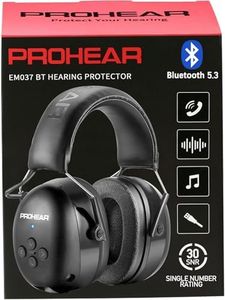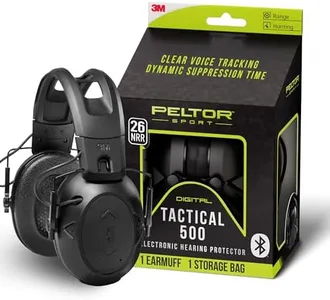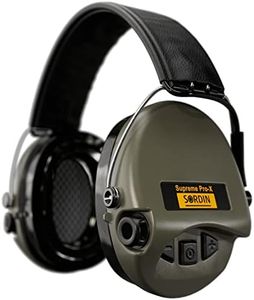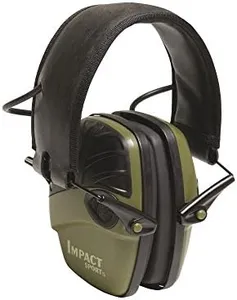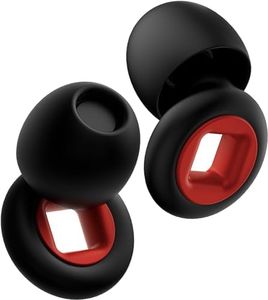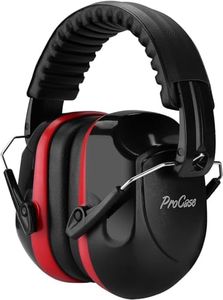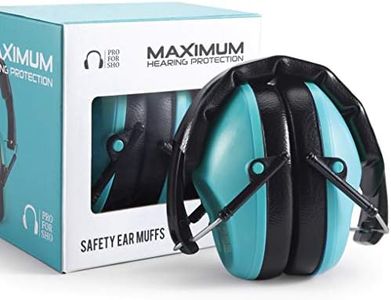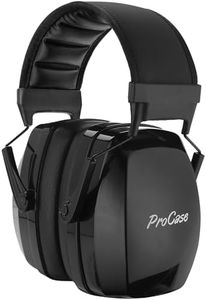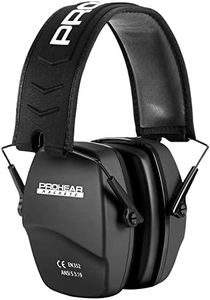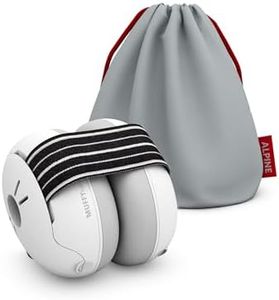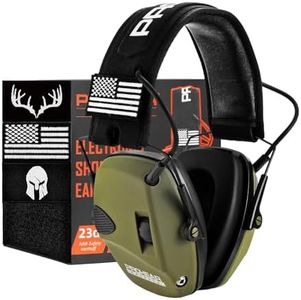We Use CookiesWe use cookies to enhance the security, performance,
functionality and for analytical and promotional activities. By continuing to browse this site you
are agreeing to our privacy policy
10 Best Hearing Protections
From leading brands and best sellers available on the web.Buying Guide for the Best Hearing Protections
Selecting the right hearing protection is crucial for maintaining your ear health, whether you're exposed to loud environments at work, during hobbies, or at concerts. Your choice will depend on where and how often you need hearing protection, the level of noise you’re facing, your preference for comfort, and whether you need additional features like communication ability or ease of use. Understanding your specific needs and matching them to the key specs of hearing protection will help you make a wise decision that protects your hearing while fitting comfortably into your lifestyle.Noise Reduction Rating (NRR)Noise Reduction Rating, often shortened to NRR, measures how much noise a hearing protection device can block out, and it's usually displayed as a number in decibels (dB). This rating is essential because it tells you how much quieter your surroundings will become when you wear the protection. NRR values typically range from about 15 dB for basic protection to 33 dB for heavy-duty devices. Lower NRR ratings are suitable for moderate noise environments like mowing the lawn or working with hand tools, while higher ratings are best for very loud environments such as shooting ranges or using heavy machinery. To pick the right NRR, assess the noise levels you'll be exposed to and aim for a level that brings the noise down to a safe and comfortable range—generally, exposure above 85 dB can become harmful over time.
Style/Type (Earplugs vs. Earmuffs)Hearing protection comes mainly in two styles: earplugs and earmuffs. Earplugs fit inside the ear canal, while earmuffs go over the ears and cover them completely. Earplugs are small, lightweight, and often more discreet, making them suitable for long-term wear or for people who move around a lot. Earmuffs, on the other hand, are bulkier but easier to put on and take off, and they may offer more consistent protection since they cover the entire ear. Choosing between them depends on comfort, convenience, and your activities; earplugs are often preferred for sleeping or under helmets, while earmuffs are great for quick use and higher noise situations.
Comfort and FitComfort and fit are critical since you may need to wear hearing protection for extended periods. Poorly fitting devices can cause discomfort, headaches, or might not protect effectively. Earplugs come in various materials (foam, silicone, wax) and sizes; some are moldable or custom-shaped. Earmuffs vary in how the cushions fit around your ears, and the headband’s pressure. Try to choose a style and size that matches your ear shape and feels comfortable for as long as you plan to wear them. If possible, test for pressure spots and make sure the protection stays securely in place without slipping.
Reusable vs. DisposableSome hearing protectors are meant for one-time use, while others can be cleaned and reused multiple times. Disposable earplugs are convenient for travel or occasional use, and you throw them away after use, which is hygienic but less eco-friendly. Reusable options, like silicone earplugs or earmuffs, can be cleaned after each use and last much longer. Your decision here depends on how often you'll use them, your interest in sustainability, and how much maintenance you’re willing to do. If you need hearing protection regularly, reusable types can be more comfortable and budget-friendly over time.
Special Features (Electronic, Communication, Music Filtering)Some hearing protection devices come with electronic features, such as built-in microphones and speakers that let you hear conversations, alarms, or music while still blocking dangerous noise levels. These are particularly useful for professionals or workers who need to communicate in noisy environments, and for musicians or concertgoers who want to protect hearing without sacrificing sound quality. Consider whether you need these special features based on your environment: environments where you need awareness or clear communication may justify choosing hearing protection with such advanced functionalities.
